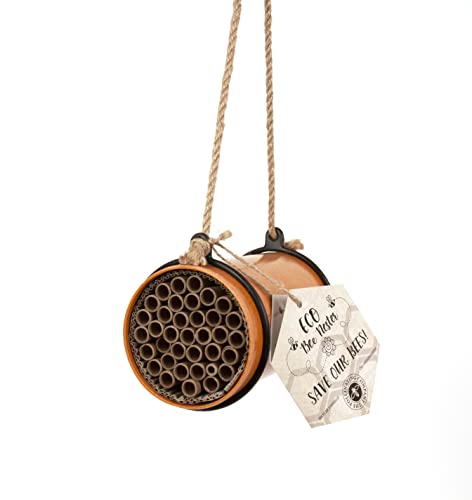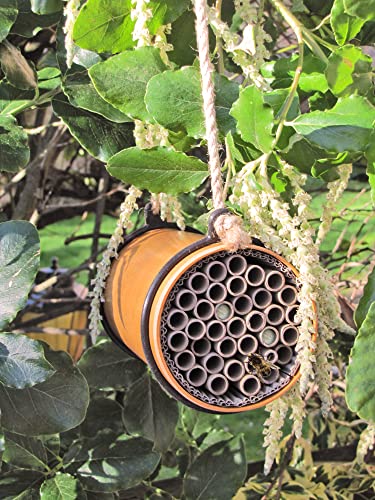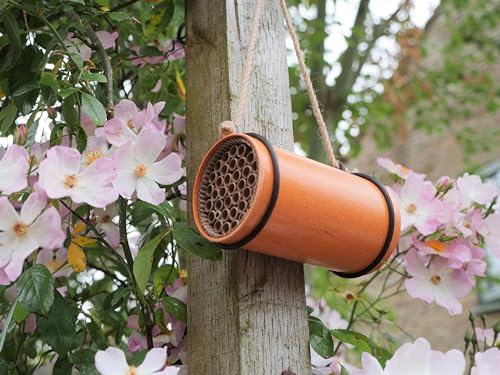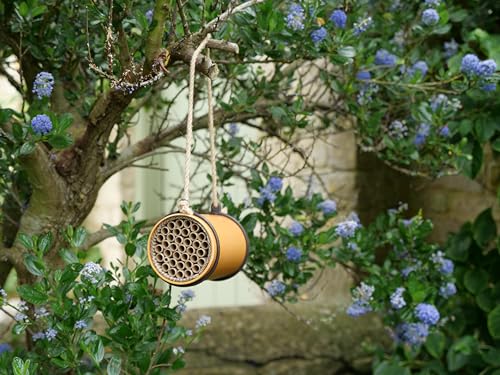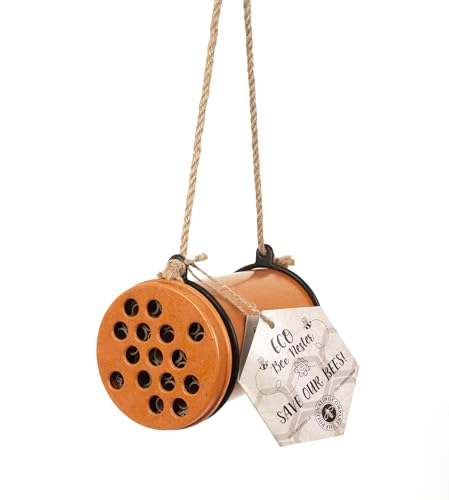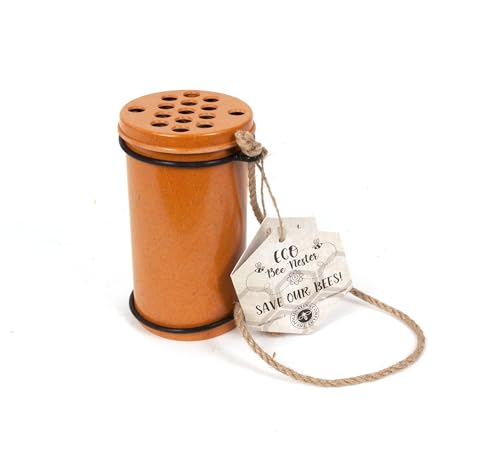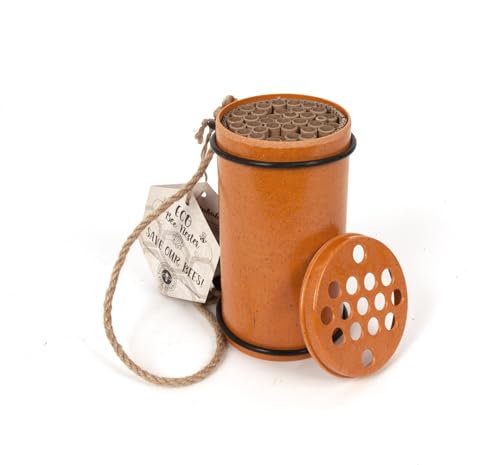Marie Curie Solitary Bee Nesting Box for Gardens, Eco Bee Nester, Attracts Mason
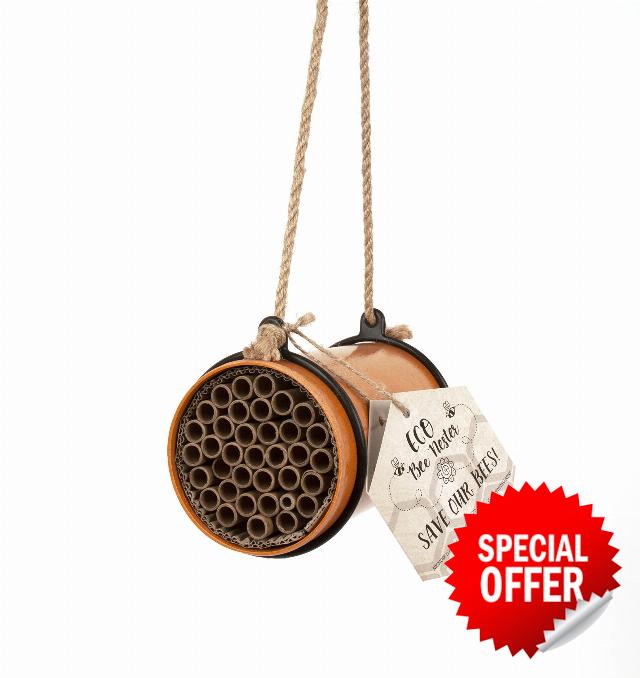
Marie Curie Solitary Bee Nesting Box for Gardens, Eco Bee Nester, Attracts Mason and Leaf Cutter Bees
- ENCOURAGE POLLINATORS: The Eco Bee Nester attracts and houses solitary Mason Bees and Leaf Cutter Bees, helping these important pollinators thrive in your garden.
- NATURAL HABITAT: Made with natural, environmentally friendly materials, the nesting tubes provide a safe space for bees to lay eggs, mimicking their habitat in tree trunks and stems. The pretty colour blends into flower patches and gardens, and the rustic hanging string is durable and long-lasting.
- LOW MAINTENANCE CARE: Bees will use the tubes independently each spring and summer, closing them with mud or leaves. The internal nesting tubes can be replaced yearly, making this a long-term investment for your local bees.
- SUSTAINABLE DESIGN: The Eco Nester is formed from natural plant fibres with almost zero waste pollution during production. Once it reaches the end of its life, it can even be degraded into fertiliser.
- ENHANCE YOUR GARDEN: By supporting solitary bee populations with the Eco Bee Nester, you'll boost pollination of fruits, vegetables and flowers throughout your allotment and borders.
- SITING: Your new Bee Nester should be hung anywhere between ground level and two metres in height. The bees need a clear pathway to the tubes, so try not to nestle it into too much vegetation. Keep the Nester in a sheltered spot, away from prevailing winds and rain.
- FRONT GUARD: You can fit the front guard on to act as a predator guard to stop woodpeckers from taking the eggs.
- GOOD CAUSE: All profits go towards providing expert care & support, along with our campaign work responding to the challenges facing people living with a terminal illness today.
The Eco Bee Nester is a sustainable way to support pollinators in your garden. Made of natural, environmentally friendly materials, this bee house provides nesting sites for solitary mason bees and leaf cutter bees through its collection of hollow tubes. The bees will use the tubes each spring and summer to lay their eggs, closing them with mud or leaves. By installing the Eco Bee Nester among flowers, trees and vegetable beds, it will attract these important pollinators whose work supports the growth of fruits, vegetables and flowers. The Eco Nester is formed from natural plant fibres with almost zero waste pollution during production. Once it reaches the end of its life, it can even be degraded into fertiliser. The internal nesting tubes can be replaced yearly, making this a long-term investment for your local bees.
Directions
Your new Bee Nester should be hung anywhere between ground level and two metres in height.
The bees need a clear pathway to the tubes, so try not to nestle it into too much vegetation. It’s a good idea to plant some nectar-rich flowers and plants nearby to feed the bees.
Keep the Nester in a sheltered spot, away from prevailing winds and rain. Ideally, you want the front of the Nester facing the morning sunshine so that it warms up through the day.
You can also angle it slightly downwards to prevent rainwater from trickling inside.
As autumn approaches and solitary bee numbers reduce, you can fit the front guard on to act as a predator guard to stop woodpeckers from taking the eggs.
| SKU: | B0D3FM1PF6 |
| Weight: | 458 g |
| Dimensions: | 17 x 9 x 9 cm; 458 g |
| Model: | AVS3209 |
| Colour: | Brown |
| Batteries Required: | No |
From the brand

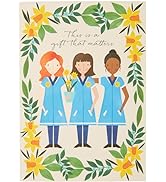
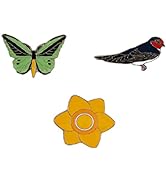
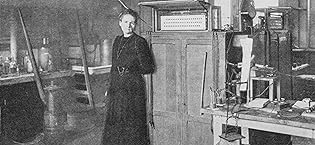
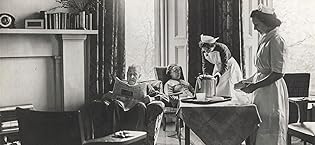
The Marie Curie International Memorial was formally established on 6 July 1948, and shortly afterwards became the Marie Curie Memorial Foundation.
This was the beginning of our charity that is now known as Marie Curie.
